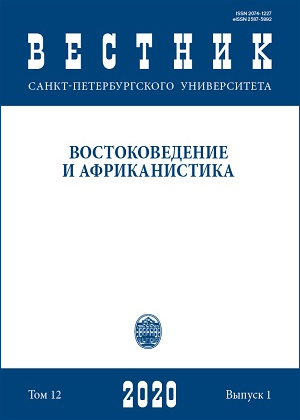The Periodization of History in the Oral Historical Traditions of Dogon and Manding
DOI:
https://doi.org/10.21638/spbu13.2020.107Abstract
The article is based on an analysis of the literature and the data obtained during fieldwork in the Republic of Guinea and the Republic of Mali in 1999, 2012, 2014 and 2015–2019. Today, oral historical legends are poorly known and insufficiently evaluated as a source of historical information. Thanks to the fieldwork on the Bandiagara Highlands, the oral historical legends from the Semari village, from the Tintan village, and three versions of the oral historical legend of the Ende village were obtained. It was on the basis of the studying these legends, as well as materials collected in Guinea, that an attempt was made to describe how the Dogons and Manding peoples themselves present their history as well as explain the periodization of their oral history. The authors, two of whom themselves are carriers of the described traditions, come to the conclusion that the periodization of history in oral historical stories among the Dogon and the neighboring Manding peoples is approximately the same and as a rule consists of three periods. The first, “prehistoric” stage contains only the name of the group that inhabited a given territory before the arrival of the ancestor of the given group. The second stage (the history of the departure of this group from the places of its initial settlement) is more detailed. As a rule, one can find there mention of the names of all members of the group of first settlers and their genealogies. The third stage, the time of existence of this group in the village founded by it, is often described even in the most precise details. Occasionally people know not only the names of all the chiefs of the village, but also the dates of their rule.
Keywords:
Guinea, Mali, Dogon, Manding, oral historical legends
Downloads
References
Downloads
Published
How to Cite
Issue
Section
License
Articles of "Vestnik of Saint Petersburg University. Asian and African Studies" are open access distributed under the terms of the License Agreement with Saint Petersburg State University, which permits to the authors unrestricted distribution and self-archiving free of charge.





